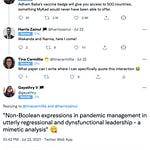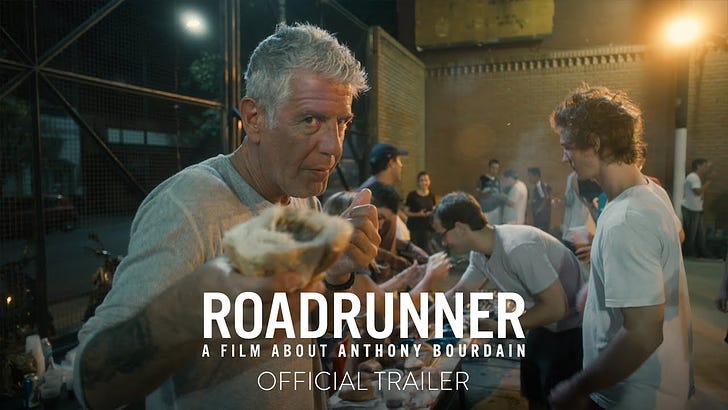Algorithm and activism
Emellia Shariff ponders on the politics of calling out and online harassment on Malay Mail.
On Wired, Internet linguist Gretchen McCulloch describes how COVID-19 is history’s biggest translation challenge.
Go forth and stan: Police are attempting to use apps and online portals to collect footage of protesters, but Kpop fans are flooding them with fancams instead, reports Seren Morris on NewsWeek. They did the same to drown out #WhiteLivesMatter hashtag, reports BBC.
This is a tool by Everest Pipkin for anonymising photographs taken at protests. It works offline.
A Twitter account is reposting everything Trump tweets. It was suspended within 3 days, Amanda Yeo writes for Mashable.
Shorthand, longhand, just write by hand!
While I was doing my press fellowship last year, I’ve had some of the most interesting conversations with some of the best in the industry. For instance, veteran journalist Roger Harrabin lamented over the death of shorthand at lunch once. I started learning shorthand a week later.
During the same press fellowship but at a different conversation, press fellow Serina Joon, whose work was on whistleblowing, reminded us that notes taken by pen and paper have more rights to privacy and protection than digital ones.
There are many ways digital notes can be surveilled, acquired or intercepted at various points of its storage and transmission. Even if you refuse to give up your digital notes, at the request of a law enforcement agency, the service providers can be compelled to do so. When you agree to the terms and conditions of such services, you also waive certain exclusivity to the rights of the notes. With written notes, the pen manufacturer and the notebook maker cannot turn over your notes even if they want to.
If you wish to destroy your written notes, you can. However, deleting your digitally stored notes does not guarantee it cannot still be retrieved.
A third and also separate incident happened during the fellowship. I was in attendance of a discussion about tech ethics and data privacy led by Aviv Ovadya. He used a voice recorder that simultaneously transcribed the recording as a means of note-taking for his personal use. Those who wished to not be recorded could announce so prior to the start of the discussion so that the app would be paused when they spoke.
Many in the room were some of the brightest minds in tech – and almost as many were distrustful towards it. One of them asked to clarify if the recording was done through a device or an app. He said, if it were an app, he would want to be excluded from the recording. I deduced that it was not that he did not want to be recorded. He simply did not want to potentially provide his voice recording to third parties via the app.
One way to work around this is to use a voice recorder with a built-in speaker to enable offline, in-device replay. This voice recorder does not require a connection to an Internet-linked device such as your smartphone or laptop where the recording can be cached and intercepted.
The other way is to take notes in shorthand. The National Council for the Training of Journalists in the UK requires a shorthand speed of 100 words per minute for certification. This speed is not quite reflective of the number of words spoken per minute by the average English speaker, which is closer to 125. However, with practice, it is possible to further improve your shorthand speed.
That’s why I spend 20 minutes every day writing shorthand even when I am not working on sensitive materials. I use Teeline, but there are other shorthand systems such as Pitman, which has been adapted for more than a dozen languages.
Earlier this year Charlotte Tobitt asked regional daily and news agency editors in the UK whether shorthand is still an essential skill for journalists.
Some excerpts:
PA Media’s Pete Clifton: “We have reporters going to court every day, where an accurate note of proceedings is still vital. And a reporter who can take a rapid note on the doorstep, then read it straight back to the news desk or write it into a story, is always going to beat someone who has to listen back to a recording.”
Yorkshire Post editor James Mitchinson argued that because the law has not changed to allow recording in courtrooms, any reporter he hires must have shorthand so they can take notes of legal proceedings.
Euan McGrory, editor the Edinburgh Evening News: “Of course with today’s technology it has never been easier to record and transcribe interviews, but there are many situations in which shorthand is still hugely beneficial. I’ve known reporters to come back from a noisy public meeting or an interview in a busy cafe to find that large parts of their recording are inaudible. Without shorthand, they would have been lost.”
Again, and most importantly, you have exclusive ownership over your own handwritten notes. The ones stored digitally? That’s not guaranteed.
What I read, watch and listen to…
I’m reading Barton Gellman’s Dark Mirror: Edward Snowden and the American Surveillance State. Wired adapted part of it that describes the NSA’s secret tool to map your social network.
I’m watching Vice News’ report on why LGBTQ Youtubers are suing Google for alleged discrimination over the algorithm it uses to moderate its platforms. The Verge reported that videos from LGBTQ creators have been automatically demonetised and age-restricted on Youtube not because of the content they produce but because of who they are.
Chart of the week
From data journalist Mona Chalabi and winner of the 2020 Shorty Award for Best Journalist on Social Media:
Sebuah penghayatan
Perkataan bahasa Melayu yang saya paling suka yang sukar diterjemah ke dalam bahasa Inggeris ialah “gotong-royong” – bukan setakat maksud perkataan itu tetapi dari segi bagaimana masyarakat kita menghayati dan mempraktikkan budaya ini.
Apabila bercakap tentang menghayati pula, saya diingatkan tentang perbualan saya dengan kawan saya, Khadijah, seorang pensyarah bahasa Inggeris yang sudah bersara. Kami berbual tentang yoga yang kami berdua amat minati dari segi praktikal dan intelektual. Kat berkata, yoga itu bukan setakat aktiviti fizikal tapi kalau dihayati betul-betul boleh menyembuhkan semangat kemanusiaan sedunia. Kalaulah, katanya, kita semua memberi yoga peluang dan menghayati prinsip-prinsip falsafahnya pasti dunia ini menjadi tempat yang lebih baik untuk didiami.
Menurut kawan saya itu, perkataan “menghayati” itu sukar diterjemahkan kerana akan dicairkan maksudnya. Kalau kita guna perkataan bahasa Inggeris yang dekat dengan maksudnya seperti “appreciate” atau “embody” ia itu masih tidak boleh betul-betul mewakili maksud sebenar yang lebih mendalam apabila kita berkata kita menghayati sesuatu.














